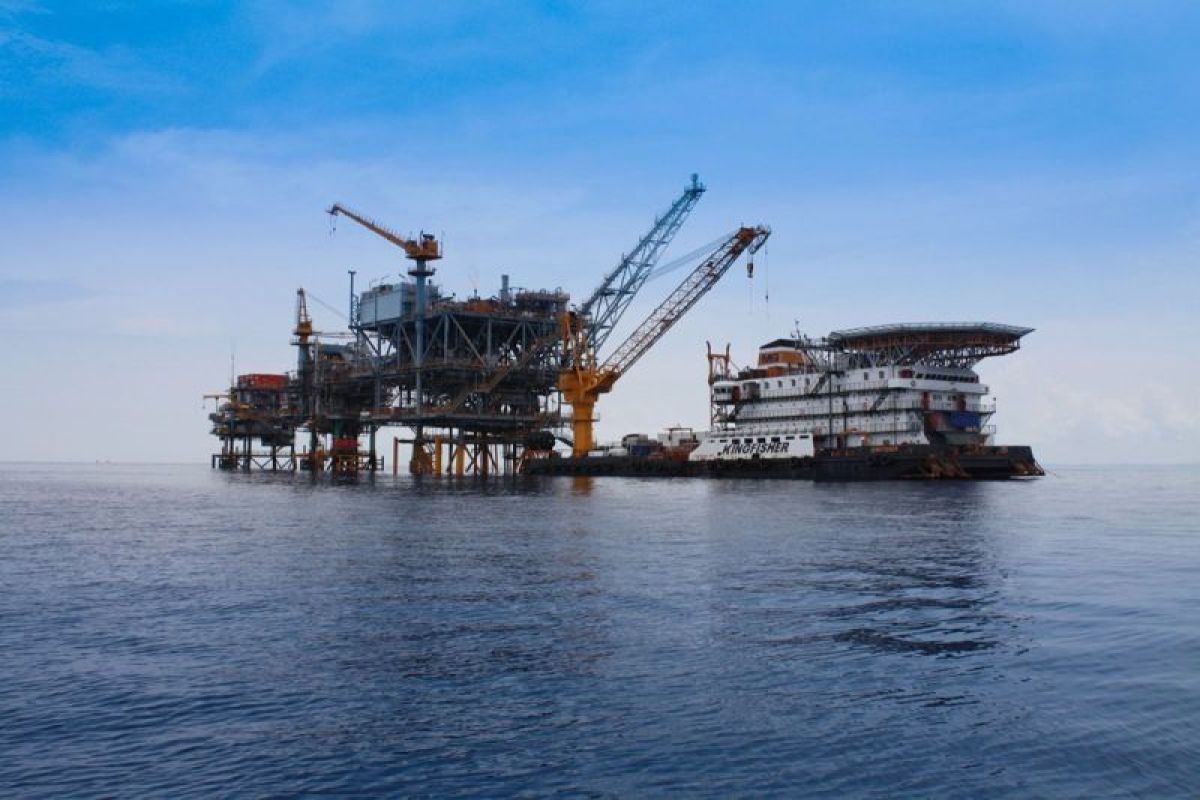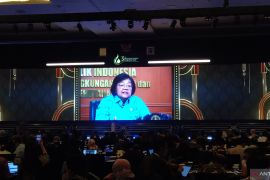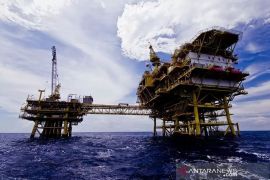The Special Task Force for Upstream Oil and Gas Business Activities (SKK Migas) stated that 2023 was the best year for the discovery of oil and gas reserves in more than 20 years.
According to WoodMackenzie, Rystad Energy, and S&P Global, these two discoveries are among the world's five largest discoveries in 2023.
Cooperation Contractor (KKKS) from the United Arab Emirates, Mubadala Energy, announced the discovery of large in-place natural gas reserves in the South Andaman Working Area (WK), with a potential of more than six trillion cubic feet (TCF).
The large gas discovery was found in the Layaran-1 exploration well, located around 100 kilometers off the coast of northern Sumatra.
The South Andaman WK is an oil and gas WK that was auctioned in 2018. In February 2019, the Indonesian Ministry of Energy and Mineral Resources and Mubadala Energy carried out the management of the working area, with a gross split contract mechanism.
In addition, KKKS ENI, an oil and gas company from Italy, also stated that it had discovered in-place gas reserves from the Geng North-1 exploration well in the North Ganal WK amounting to 5 TCF, with condensate content estimated at 400 Mbbls. The oil and gas WK is located around 85 kilometers off the coast of East Kalimantan.
Production acceleration
The production process was sped up to immediately optimize the two large gas sources.
SKK Migas’ Deputy for Exploration, Development, and Management of Working Areas, Benny Lubiantara, stated that most exploration oil and gas investors will choose Working Areas equipped with infrastructure and are closer to the market. Hence, these two points need to be taken into consideration to immediately optimize any source finding.
The discovery of these two large sources is expected to attract foreign investors to include Indonesia in their future investment portfolio.
Hence, SKK Migas is expecting improvements in fiscal and non-fiscal terms for ease of doing business.
Improvements in those sectors can increase the attractiveness of the Indonesian investment climate, considering that currently, Indonesia is also in a competitive mode with other countries in terms of oil and gas investment.
This discovery is also targeted to accelerate the process toward onstream or production. According to the plan, SKK Migas plans to start production activity at the South Andaman WK in 2028-2029.
Related news: Natural gas finding may boost Indonesia's energy potential: observer
Coordination
SKK Migas has also coordinated with ENI, as the operator of Geng North, to speed up the production process after the discovery of this large gas source to strengthen the national gas balance.
In addition, the production process is expected to support gas downstreaming in the area and revive Badak LNG Bontang Operations, from two trains to four trains, with gas supply amounting to 1,700 million standard cubic feet per day (MMSCFD) or equal to the production in the Abadi Liquefied Natural Gas (LNG) project in Masela block.
President Director of Mubadala Energy Indonesia, Abdulla Bu Ali, stated that the large gas discovery was part of Mubadala Energy's future program to support Indonesia's production target in 2030, namely one million barrels of oil per day (BOPD) and 12 BSCFD.
His side will expedite the process to start drilling other exploration wells in the same WK. Hence, Mubadala Energy needs support from various parties to realize this plan.
Ali admitted that in recent years, the Indonesian government made several improvements in terms of legal certainty and fiscal terms. Moreover, currently, the government has relaxed and provided flexibility in terms of gross split contract mechanisms and cost recovery.
Momentum
After the discovery of two natural gas sources, Rystad Energy learned that Indonesia has the momentum to be able to meet its energy needs independently while also having an influential position at the global level through the utilization of its natural gas resources.
Data from Rystad Energy estimated Indonesia’s gas resources reaching more than 100 TCF, or almost half of the total gas resources in Southeast Asia.
However, the company emphasized that these large potential resources are not sufficient, as the real challenge is immediate resource monetization.
For instance, in optimizing Indonesia's gas reserves, KKKS companies face complex challenges. Most of the gas potential has not been optimized since it is located in deepwater areas with high CO2 content.
The main priority currently is ensuring that Indonesia remains an investment destination for global investors.
It can be realized by creating appropriate policies to anticipate future energy needs while meeting current needs, especially in the context of low-carbon energy provision.
Rystad Energy assesses that the strategy to maximize gas reserves must be carried out gradually. In the short term, related parties must consider the need to restart delayed gas projects due to challenges in mergers and acquisitions (M&A) and financial constraints.
In the medium term, development of the Masela Block and Indonesia Deepwater Development (IDD) will be important. However, the issue of gas prices is also a determining factor to succeed the development of these blocks.
The next challenge is adapting to low-carbon policies and increasing the fiscal attractiveness of natural gas projects and the availability of infrastructure.
The development of infrastructure and hubs is also important for exploiting deepwater discoveries. In addition, adjusting domestic gas pricing policies and ensuring a stable increase in gas demand also hold importance.
Related news: Gas more effective energy source than nuclear : official
Energy transition
The energy transition era can become a momentum to improve the upstream oil and gas sector in Indonesia. Natural gas is the answer to energy needs amid the massive global push to reduce carbon emissions.
Oil and gas practitioner and lecturer from the Bandung Institute of Technology (ITB), Widhyawan Prawiraatmadja, stated that natural gas can be used as a bridge to the era of new and renewable energy (EBT). Hence, it would not come as a surprise to him if the need for natural gas would increase in future.
However, the government's support is needed to develop the natural gas potential in Indonesia to be monetized immediately, apart from gas infrastructure that had earlier been a challenge.
Prawiraatmadja stated that the sustainability of investment in the upstream oil and gas sector should be maintained until it can reach the monetization stage after the discovery of new sources, such as in South Andaman and Geng North.
The discovery of this natural gas source is a breath of fresh air to support the gas production target in 2030 of 12 BSCFD. Hence, to this end, the production process should be accelerated to immediately optimize these findings.
Related news: Power plant gasification program for promoting energy transition: govt
Editor: Yuni Arisandy Sinaga
Copyright © ANTARA 2024












